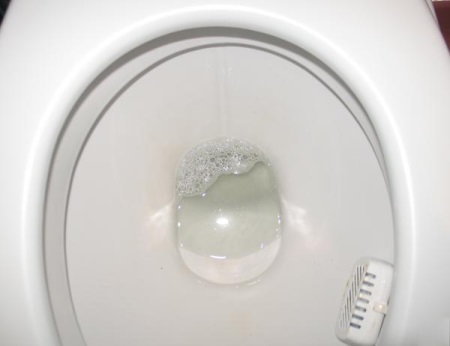How to clean the toilet from a urine stone?
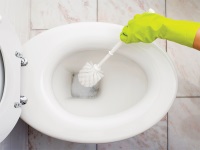
Every housewife tries to keep her apartment clean: she vacuums, washes, cleans, cleans the farthest corners of the room. But no matter what, some little things get overlooked and problems appear that require more serious treatment. For example, a urinary stone. Not for nothing called stone, hard, dirty unpleasant color, it not only spoils the appearance of the toilet bowl, but over time can significantly reduce the hole for the drain.

Causes of formation
Urinary stone appears most often at the bottom of the toilet bowl, less often - on the rim. The cause of its appearance is the irregular drainage of water, as a result of which mineral deposits accumulate on the walls of the toilet bowl. Over time, the layer increases and it is no longer possible to remove with a simple scrubber without the use of special means.

How to clean with folk remedies
If the plaque is not too stagnant, you can cope with it and improvised means. Most often these are:
- Table vinegar.
- Citric acid
- Baking soda
- Baking soda .
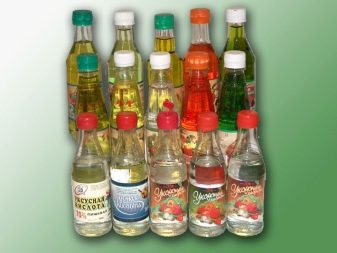

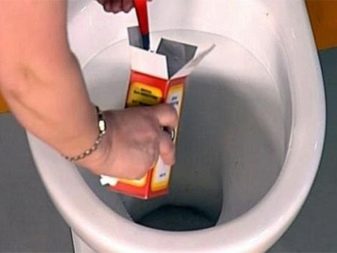
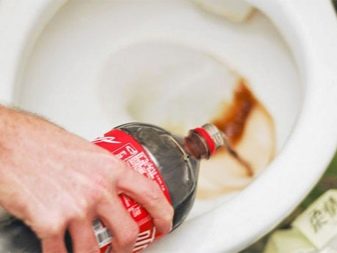
First, you need to remove any water left there from the toilet bowl, such as with a plastic cup and wipe it down with a dry cloth. And then we cover the surface, overgrown with stone, with the selected remedy and let it stand for an hour or two. If necessary, the procedure can be repeated.
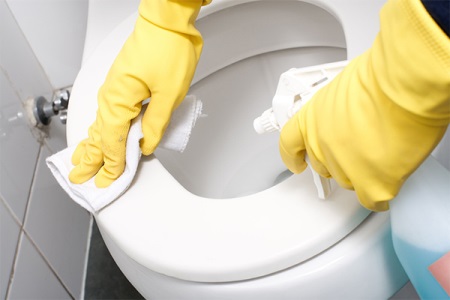
- If you choose vinegar, it is desirable to take the most effective means - vinegar essence. Soak a rag and put it on the dried surface for about a couple of hours. You can use and ordinary 9% table vinegar, but for best results it is desirable to warm to a temperature of 40 degrees and mixed with baking soda. The resulting solution is poured into the toilet bowl and leave it for the night.
- By the way, baking soda itself has proven itself in the fight against stone and plaque. To do this, a pack of baking soda abundantly sprinkled in the evening on the inside surface of the toilet bowl and leave it until morning. If the stone is not too strong, in the morning will only pass a scrubber and wash off the deposits with water.
- Citric acid is an affordable and budget-friendly remedy. And it is enough only a couple of bags of acid, the contents of which we pour into the toilet and leave for 6-10 hours - depending on the thickness of the layer. And if the case is quite neglected, you may need more acid.
- Proven itself well and would seem a non-standard way of cleaning with all the famous Coca-Cola, the effect of which is explained by the content of citric acid in it. Two or three bottles of soda poured into the toilet bowl and wait until they cope with deposits.
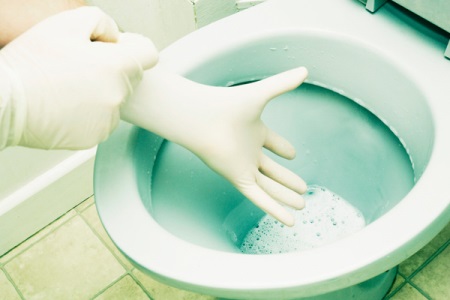
Chemical cleaners
Where home remedies were powerless, chemical remedies come to the rescue:
- Hydrochloric acid
- Battery electrolyte
- Phosphoric acid
- Chlorine
- Top brands
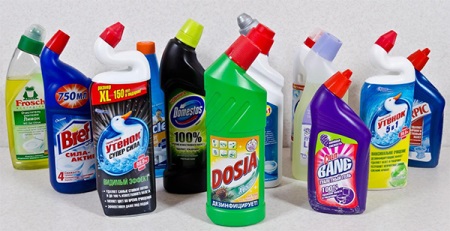
Chemical agents are designed to cope with the most neglected cases, but their use requires special precautions. In most cases, a respirator or gauze bandage will be needed, as well as rubber gloves to prevent skin contact. In particular, such measures are necessary when handling hydrochloric acid, because it is a very strong agent. A glass of acid poured into the toilet can cope with deposits in a quarter of an hour. However, it is forbidden to use it if you have plastic pipes.
- Battery electrolyte in liquid form is as powerful as hydrochloric acid. It will help to cope with even the most neglected plaque. The only thing is that it is not desirable to use it often, and again, only use it in cases where your pipes are made of durable materials, such as metal.
- 5-7% solution of phosphoric acid - is also an effective and inexpensive way to combat mineral deposits. And it is enough to apply only 100 grams of the solution on the walls and leave for 10-15 minutes. Since it does not interact with plastic, it can be used in all cases - your pipes will not be damaged by it.
- Chlorineor rather chlorine-containing means, such as "Belizna" - an effective, but very harmful to health means. If other options do not suit you for whatever reason, pour "Belize" in the toilet bowl close tightly with the lid and leave for about an hour.
- A lot of special preparations to combat deposits Well-known brands today can be found on the shelves of stores. These solutions, creams, gels under such popular brands as Cillit, Domestos, Toilet Duck. Most often they are made on the basis of hydrochloric acid or chlorine. Before using, you should carefully study the instructions on the package. The only thing is that if you are going to use abrasive cleaners, use them with caution so as not to damage the walls of the toilet bowl.
- Are available and special tabletswhich should be put in the tank. Not only do they cope well with all kinds of sediments, but they are also an excellent preventive agent. You can tell whether the remedy is still working by the coloring of the water in a particular shade, and if the water becomes clear, you need to add another tablet to the tank.
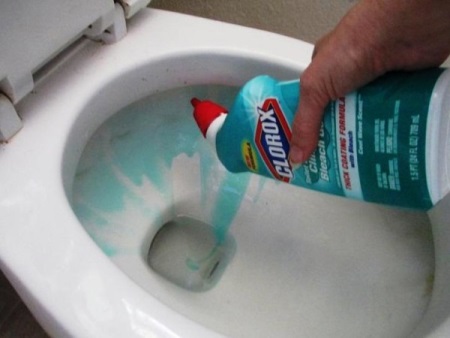
Neglected cases
In neglected cases, lime scale is added to the stone, which is present in hard water. It can clog the holes through which the water needed to flush the waste enters. More often than not, scaling is deposited on old plumbing, the surface of which has become rough over time. Therefore, either follow such a toilet bowl will have to be with great care, or if possible, you should replace it with a new one.
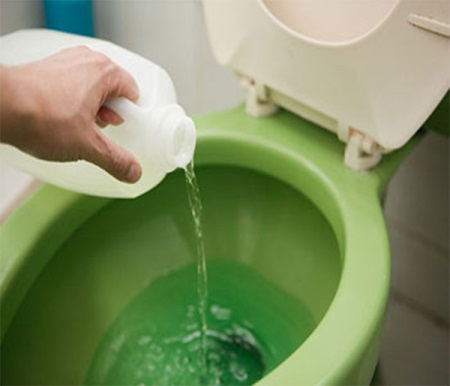
Prevention
In order not to complicate your life, it is necessary to observe preventive measures that will prevent the formation of deposits on your plumbing. For starters, you should reduce the level of water that goes into the cistern for flushing or immediately buy a cistern that provides an economical mode of using water. It is also important to eliminate any leaks.
In addition, it is necessary to carry out timely hygienic cleaning of the toilet bowl with a scrubber and detergents, and in the water for flushing add special preparations that will soften it. Do not pour liquids into the toilet bowl, for example, hot water, which can lead to the formation of small, sometimes invisible to the eye cracks on the surface, because they are the ideal environment for the appearance of plaque.
